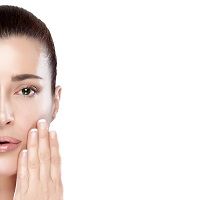The Impact of Cutaneous Hyperandrogenism on Quality of Life
When women present clinically with acne, hirsutism, and androgenetic alopecia, the likelihood is that the causative hormone is androgen. Collectively, these symptoms signal cutaneous hyperandrogenism.

Skin is a complex independent endocrine organ that often responds to hormonal changes. When women present clinically with acne, hirsutism, and androgenetic alopecia, the likelihood is that the causative hormone is androgen. Collectively, these symptoms signal cutaneous hyperandrogenism (CHA). A review in the Journal of the American Academy of Dermatology looks at the evidence and describes CHA’s impact on the quality of patients’ lives. Its key point is that CHA may be an isolated idiopathic condition or an indication that systemically, another disease is present.
Differential diagnosis is critical. Polycystic ovary syndrome, hyperprolactinemia, Cushings and a handful of other systemic diseases may manifest with CHA’s symptom triad. Hirsutism is often the presenting complaint in women who develop androgenic adrenal or ovarian tumors.
Women with CHA don’t necessarily have abnormal serum androgen levels because its pathophysiology, especially at the pilosebaceous unit, is quite complicated. When they do, hyperandrogenism is more likely to cause hirsutism than are acne or androgenetic alopecia.
Hyperandrogenism often leads to comorbid polycystic ovary syndrome. It also causes a handful of unusual, uncommon conditions including nonclassic adrenal hyperplasia and androgen-producing tumors.
In conducting a thorough history and skin examination, physicians need to pay special attention to the androgen-sensitive areas (eg, trunk, face, and inner thighs). Often, the patient’s backs give better pictures of the disease because patients cannot reach that area to apply cosmetics.
Almost all women with clinically significant CHA will need hormonal or anti-hormonal treatment—combination oral contraceptives, spironolactone or flutamide—in conjunction with topical and physical treatments like laser. Response may take 3 to 6 months and may need to be used for many years.
Diet and exercise can help patients with hyperandrogenism and may reduce hirsutism, particularly in patients with PCOS.
These authors present a good summary of what we know about CHA, but hasten to point out that most of our understanding is theoretical, and more study is needed.